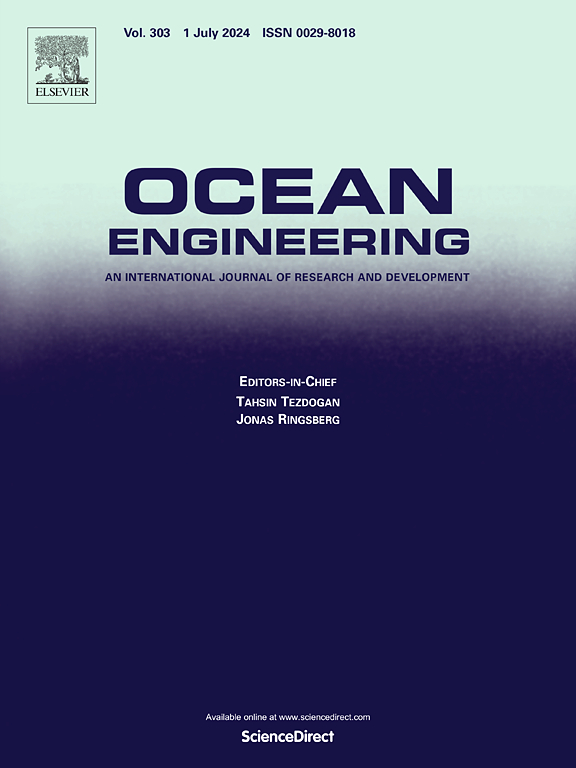一种具有非接触吸附能力的双模水下机器人:设计、模式切换及现场应用
IF 4.6
2区 工程技术
Q1 ENGINEERING, CIVIL
引用次数: 0
摘要
提出了一种既能游泳又能爬壁的水下双模操作机器人(UDOR)。UDOR可以在游泳模式下实现6个自由度(DOF),类似于遥控潜水器(ROV),在爬壁模式下实现3个自由度(DOF),利用螺旋桨驱动的伯努利吸附装置(pbd)。由于pbd是非接触式吸盘,因此机器人可以借助其全向轮在壁面上灵活地向各个方向移动。与仅限于爬墙作业的机器人相比,UDOR通过切换模式在具有挑战性的壁面上提供了更强的机动性:当遇到不可爬的区域时,UDOR会从壁面上脱下,切换到游泳模式以到达下一个可爬的表面,然后恢复爬墙模式继续作业。为UDOR的壁面运动设计了模糊PID控制器,通过推力器控制的被动轮实现轨迹跟踪。实验室实验表明,游泳速度可达1.5 m/s,并具有稳定的爬壁能力。在水库大坝和钢壳船上进行的现场试验验证了机器人在波浪、水流和不同表面材料的实际操作条件下的性能。结果表明,UDOR系统适用于多种材料和复杂地形组成的水下结构的作业任务。本文章由计算机程序翻译,如有差异,请以英文原文为准。
A dual-mode underwater robot with non-contact adsorption ability: Design, mode switching and field applications
This paper proposes an underwater dual-mode operating robot (UDOR) capable of both swimming and wall-climbing. The UDOR can achieve 6 degrees of freedom (DOF) movement in swimming mode, similar to a remotely operated vehicle (ROV), and 3 DOF locomotion in wall-climbing mode, utilizing propeller-driven Bernoulli adsorption devices (PBDs). Since PBDs are non-contact suction cups, the robot can locomote flexibly in all directions on the wall by virtue of its omnidirectional wheels. Compared to robots limited to wall-climbing operations, UDOR offers enhanced mobility on challenging wall surfaces by switching modes: when encountering unclimbable areas, UDOR desorbs itself from the wall, transitions to swimming mode to reach the next climbable surface,and then resumes wall-climbing mode to continue operations. A fuzzy PID controller is designed for UDOR’s wall locomotion, enabling trajectory tracking through passive wheels controlled by thrusters. Laboratory experiments demonstrated swimming velocities up to 1.5 m/s and stable wall-climbing capabilities. Field trials conducted at a reservoir dam and on a steel-hulled vessel validated the robot’s performance under real operating conditions with waves, currents, and varied surface materials. The results demonstrate UDOR’s suitability for operating missions on underwater structures composed of diverse materials and complex terrains.
求助全文
通过发布文献求助,成功后即可免费获取论文全文。
去求助
来源期刊

Ocean Engineering
工程技术-工程:大洋
CiteScore
7.30
自引率
34.00%
发文量
2379
审稿时长
8.1 months
期刊介绍:
Ocean Engineering provides a medium for the publication of original research and development work in the field of ocean engineering. Ocean Engineering seeks papers in the following topics.
 求助内容:
求助内容: 应助结果提醒方式:
应助结果提醒方式:


